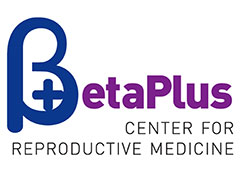Successful methods of assisted reproductive technology (ART) are intrauterine insemination (IUI), in vitro fertilization (IVF) and intracytoplasmic sperm injection (ICSI) . These methods may be applied:
- In a completely natural cycle – can be carried out every month
- In a modified natural cycle
- With mild ovarian stimulation (2-6 eggs) – can be carried out 4-5 times a year
- With standard ovarian stimulation – can be carried out several times a year
In consultations with your reproductive gynecologist you will choose a method which is most appropriate for you at the time. Medical experts performing assisted reproductive technology are as follows:
- Reproductive endocrinologists with experience in gynecological endocrinology, reproductive medicine and ultrasound examination.
- Biologists-embryologists, i.e. biology engineers, with experience in working with gametes and embryos. They should be licensed in accordance with professional criteria.
- Nurses working in ART institutions must undergo a special education in the field as during the process of assisted reproduction they are the ones who mostly communicate to the patients.
The success of the procedures depends on many factors. On average insemination and IVF/ICSI in a natural cycle have a success rate of 10-15%, IVF/ICSI with mild ovarian induction comes to 25-30%, whereas IVF/ICSI in conventional induction has a success rate of 25-40% per procedure.
The success rate of the procedure, among others, depends on the following:
- Patient’s age
- Cause of infertility
- Ovarian reserve
- Quality and experience of the medical staff
- Quality of the endocrinology lab
- Age of medical devices and equipment used in the endocrinology lab
- Quality of culture media and materials
And let us not forget that the success also depends on a woman’s health and her optimism and positive attitude.
Besides age, birth delay, and low fertility rate in women, there are also objective infertility causes and couples that have serious difficulties in getting pregnant naturally. These causes can be fallopian tube damage, heavy endometriosis, poor semen quality, anovulation, etc. Reproductive gynecologists will minimally require the following findings: pap smear not older than 1 year, ultrasound examination, cervical smears, hormonal status, and semen analysis. Depending on these basic findings, other examinations might also be required.
When infertility causes are determined, proper treatment is selected. The simplest method is always of first choice. Assisted reproductive technology (ART) methods that are currently used in Croatia are:
- Determination of ovulation (in natural or stimulated cycle) and timed intercourse
- With ultrasound, and sometimes hormonally (by measuring hormone levels in the blood) follicle (structure in the ovary that contains oocytes) development is monitored, and ovulation time and optimal intercourse time are determined. The prerequisite for this method is tubal patency but in the early phase of the infertility treatment, tubal patency is usually not examined if there are no suspicions of fallopian tube damage.
- Intrauterine insemination (IUI)
- The prerequisite for this simple method is again patent fallopian tubes. It can be determined by tubal patency testing by X-ray imaging (HSG – hysterosalpingography), or by ultrasound examination (sono HSG). For examination of tubal patency, the patient must have normal cervical smears. If the infertility diagnosis is more severe and in vitro fertilization is planned, tubal patency examination is not recommended.
- In vitro fertilization (IVF) with fresh or frozen embryo transfer
- Oocytes are aspirated from ovaries and inseminated with partner sperm in the laboratory. If fertilization is successful, 2 or 3 embryos are transferred to the uterus. If more viable embryos are available from the couple, they are cryopreserved and transferred in the subsequent cycles if necessary.
- Intracytoplasmic sperm injection (ICSI)
- ICSI is used for severe male infertility. After oocytes are aspirated and collected, one selected sperm is injected.
Other ART methods are available, for example, insemination with donor semen in very severe cases of male infertility, obtaining sperm after testis aspiration or biopsy, oocyte donation in premature menopause in women, surrogacy in severe conditions and anomalies of the female reproductive tract, etc. Since Croatia lacks legislation on this topic, these other ART methods are not currently performed.




